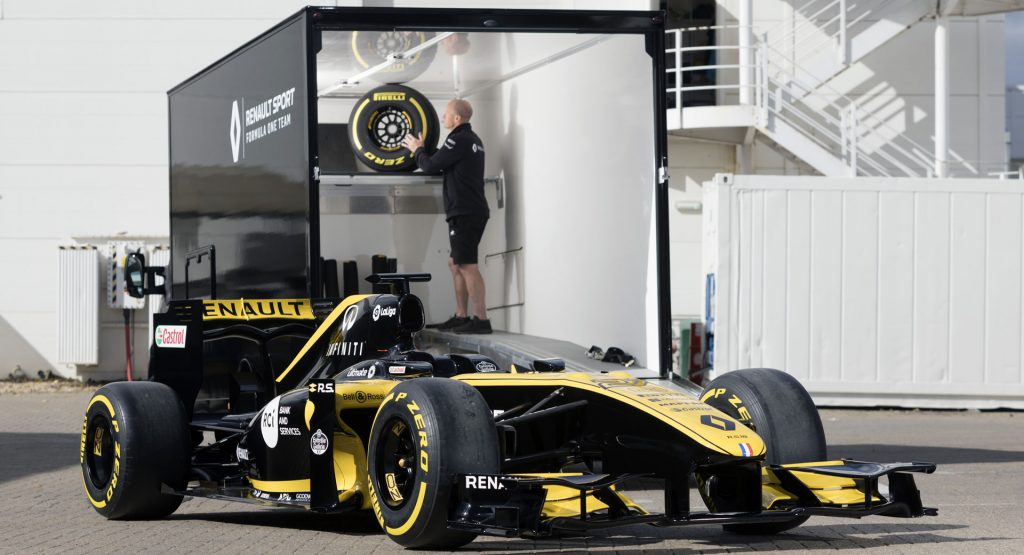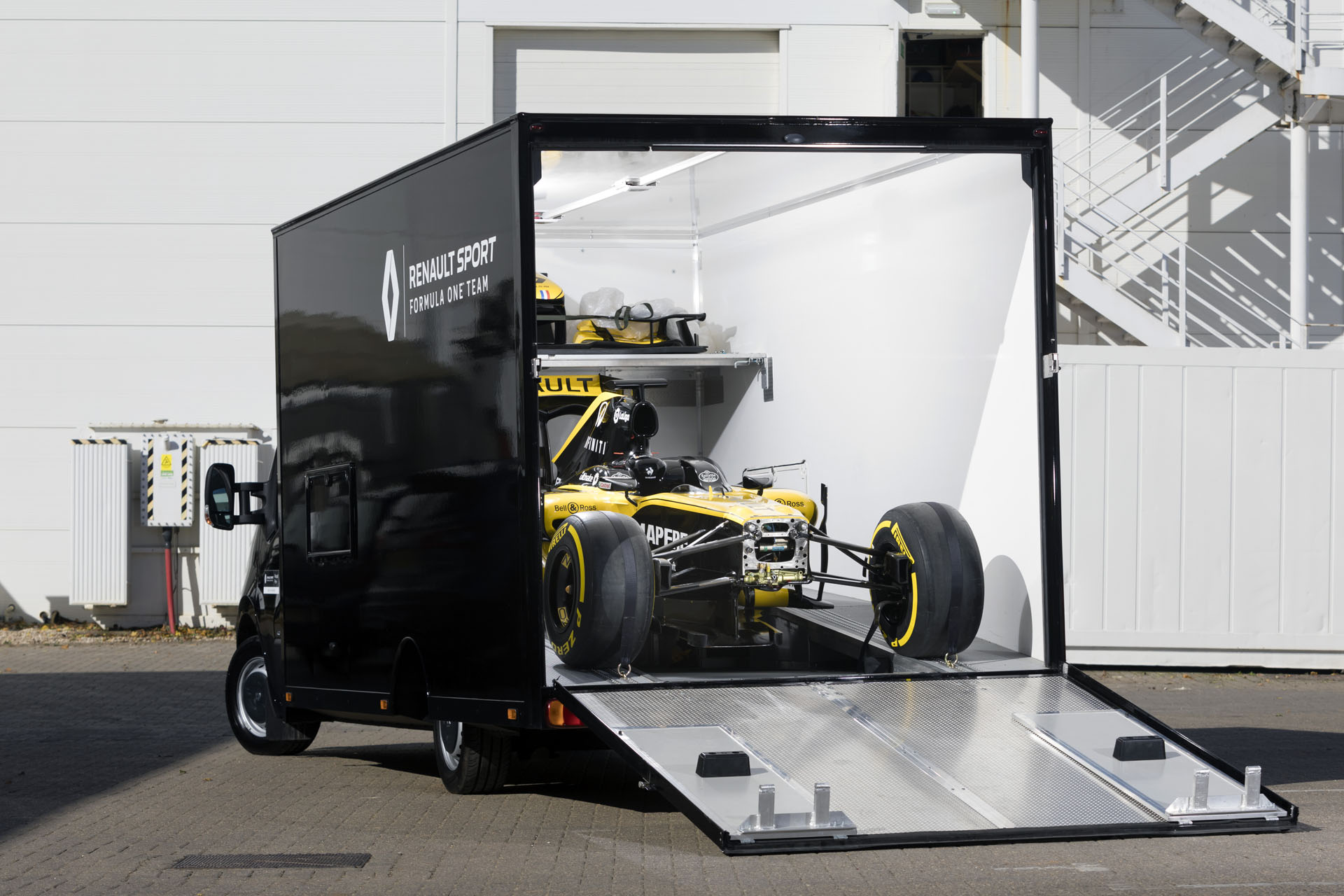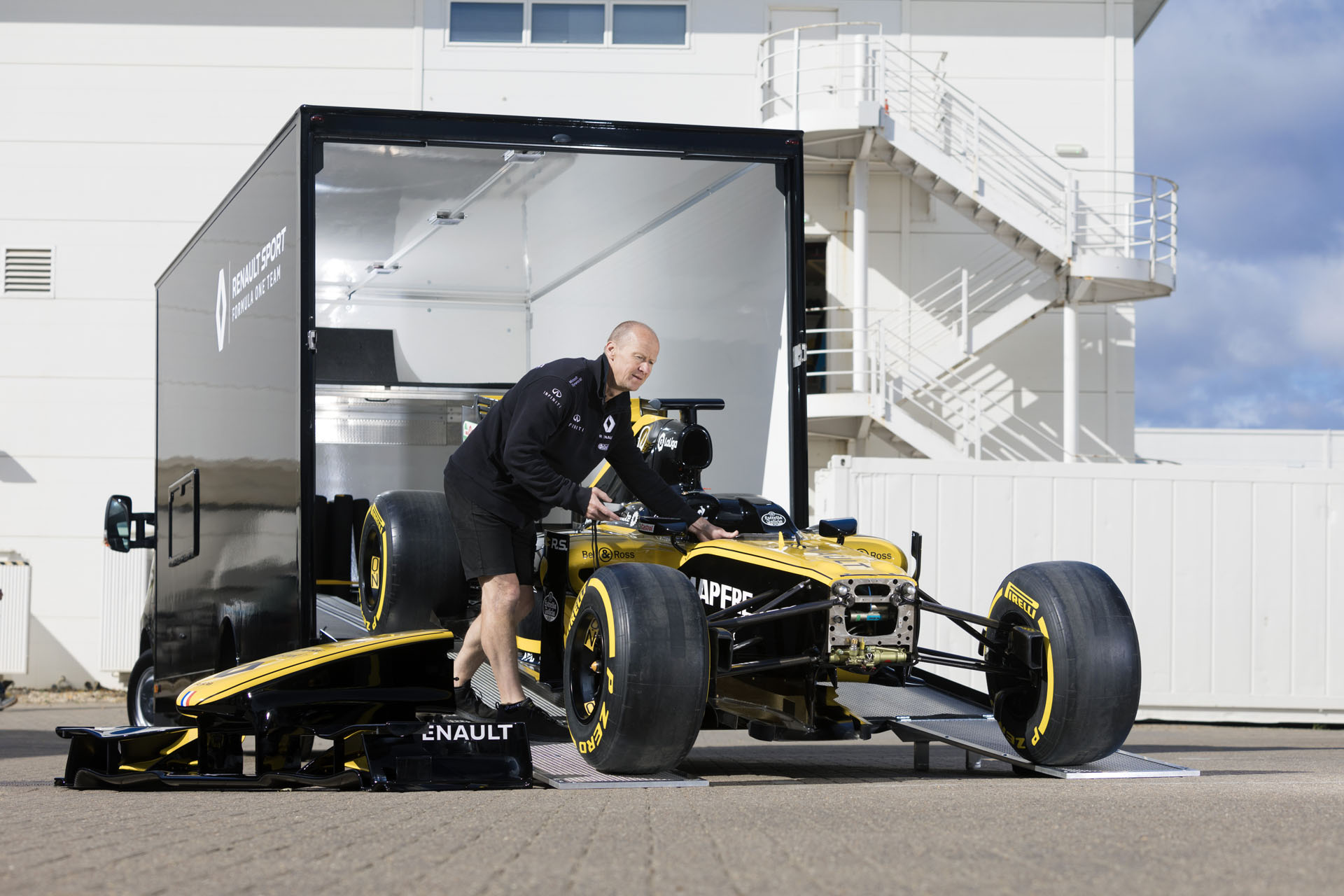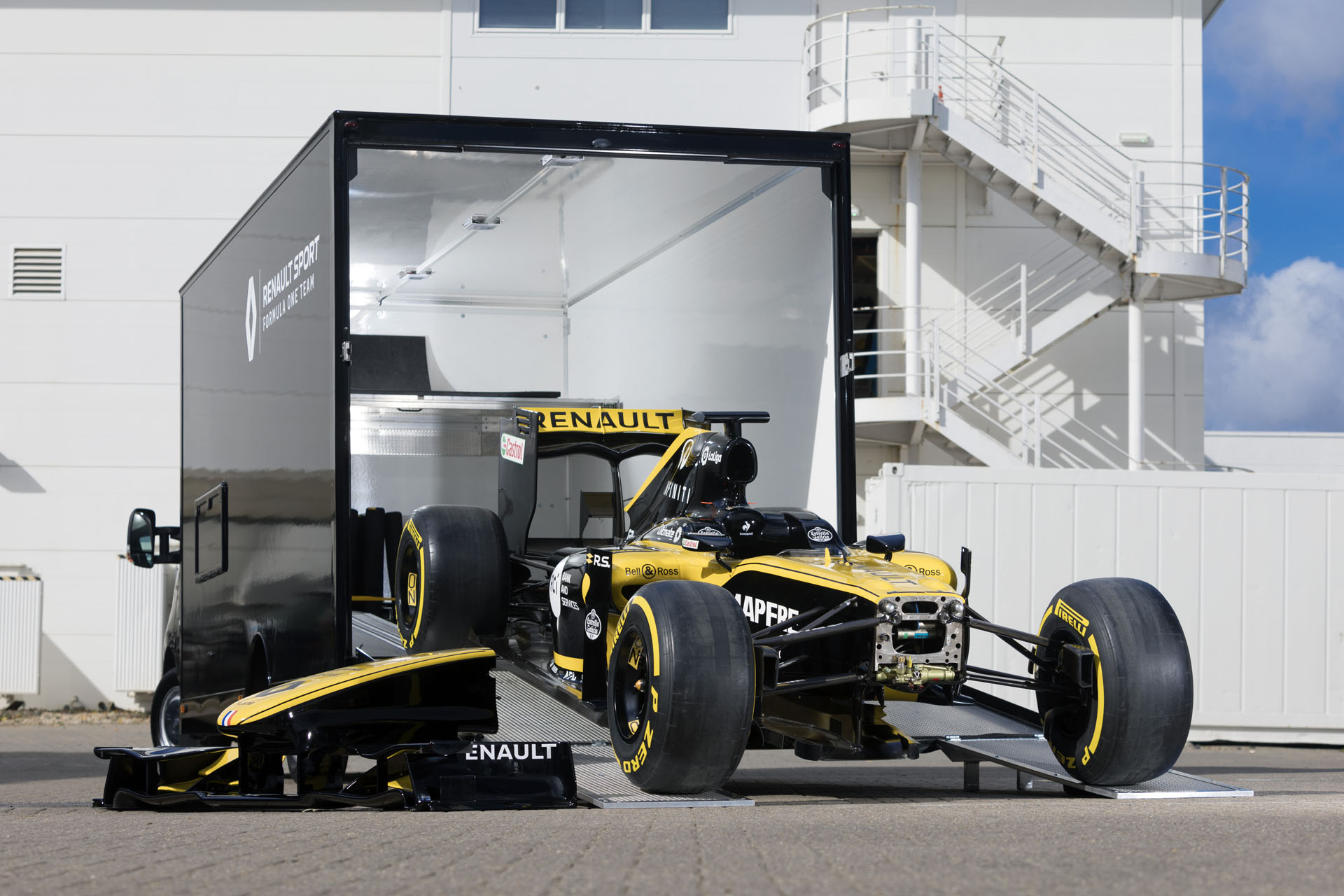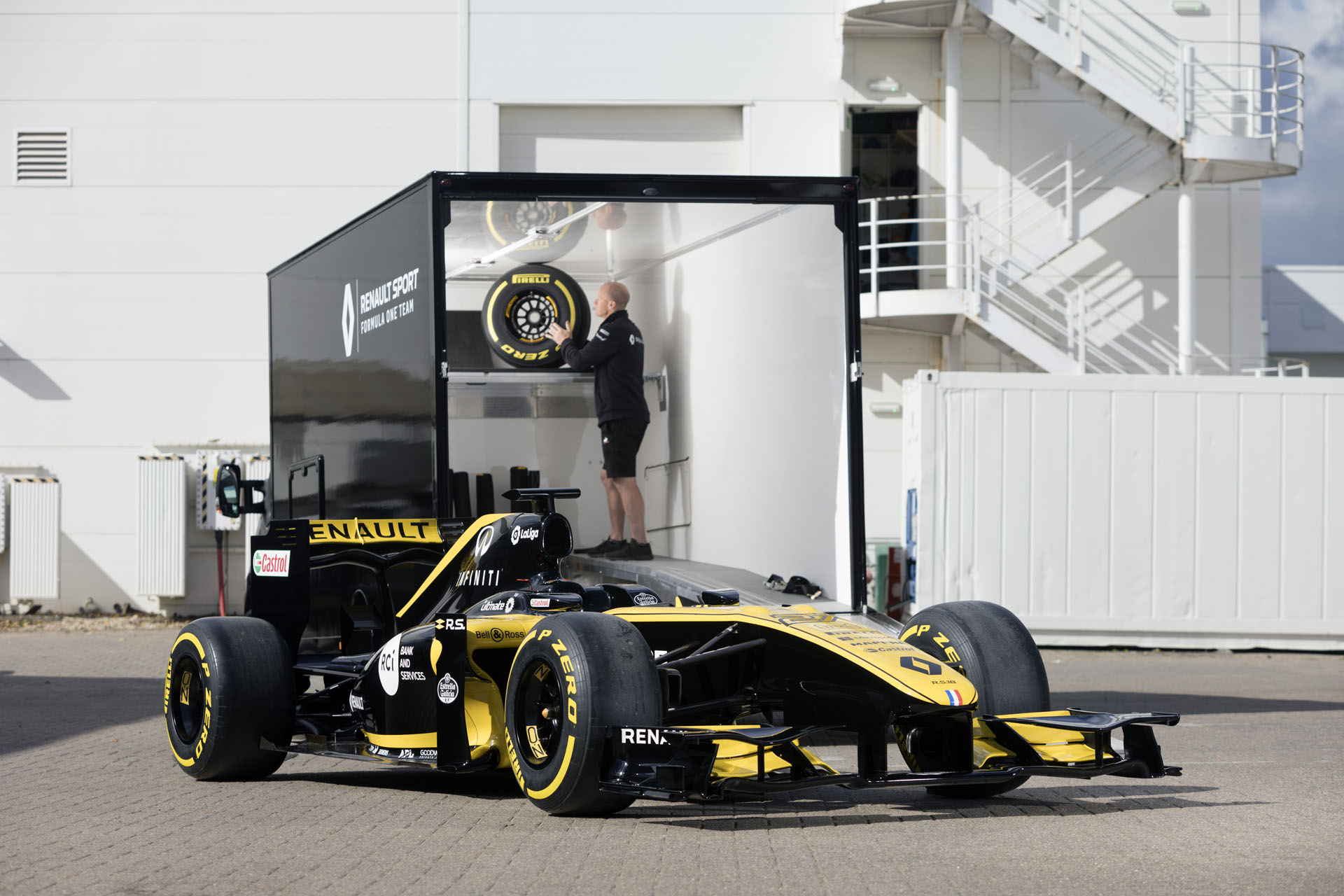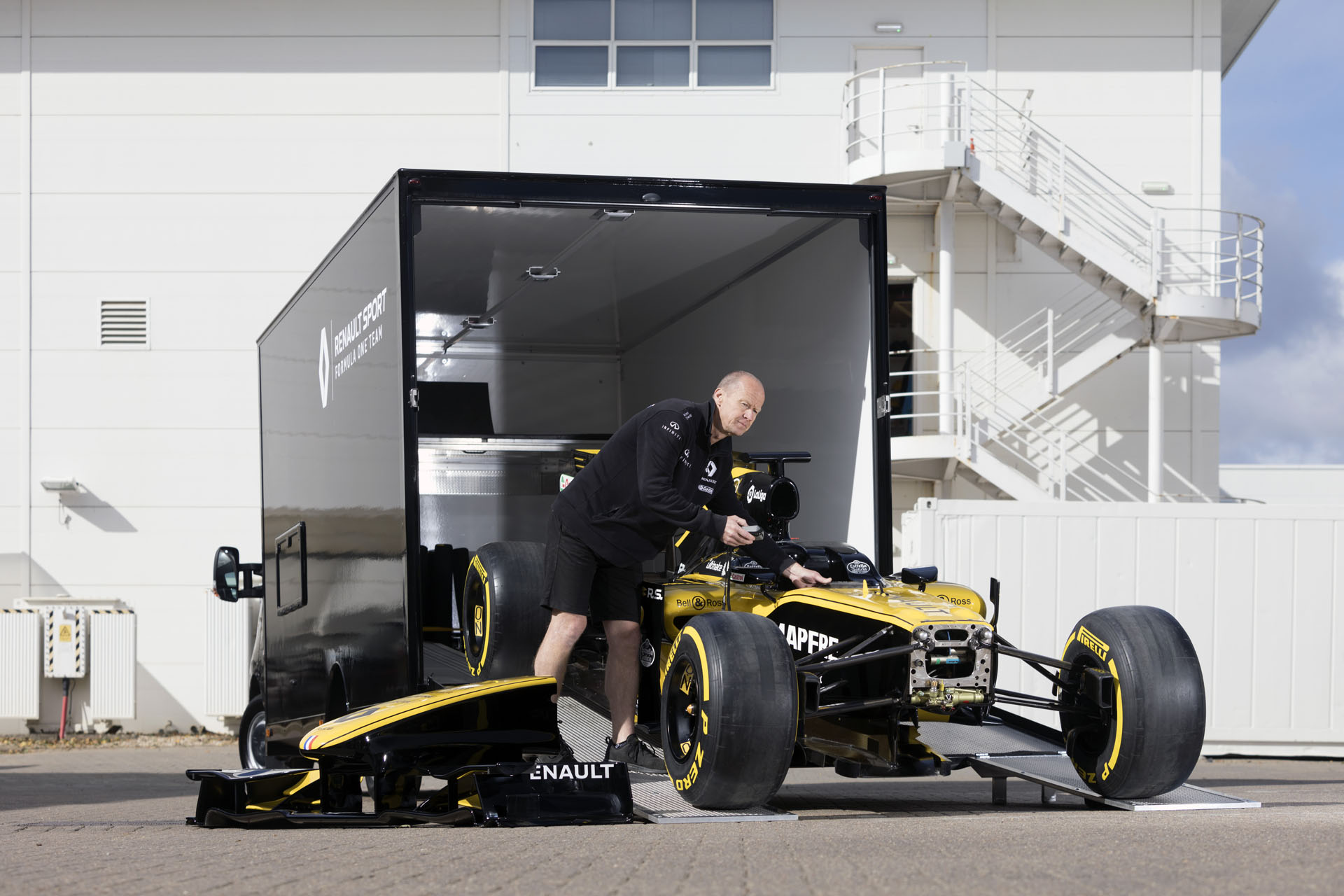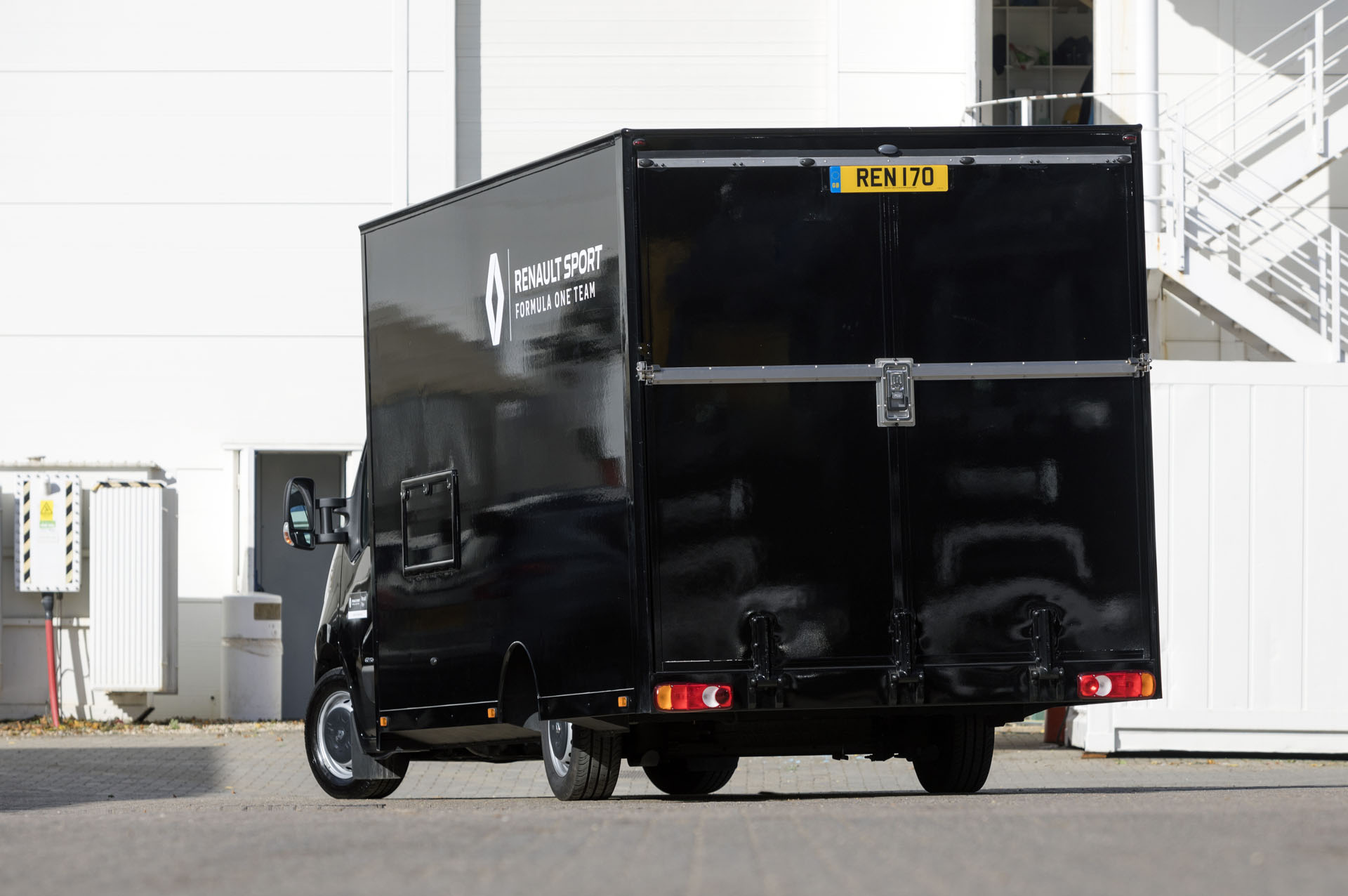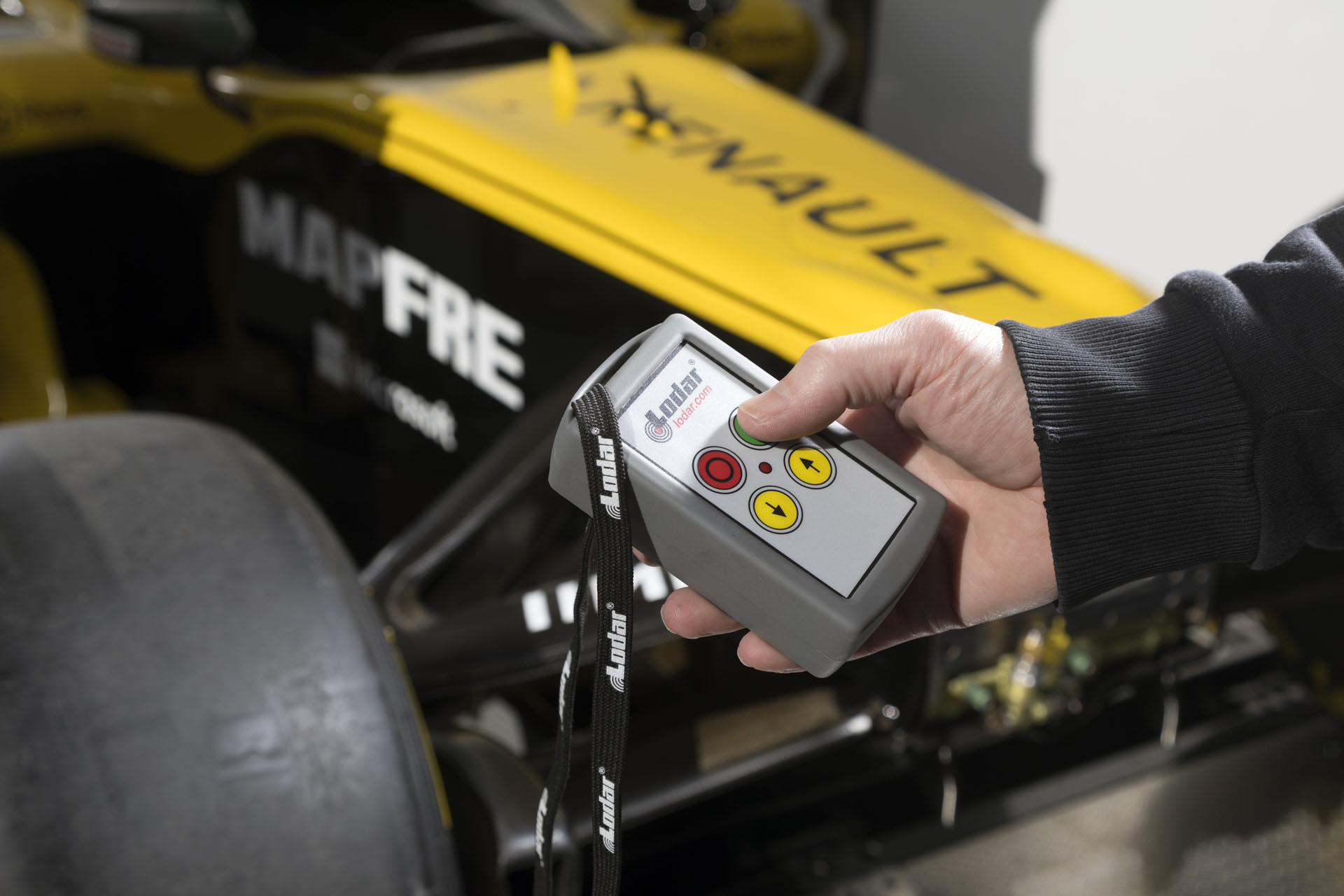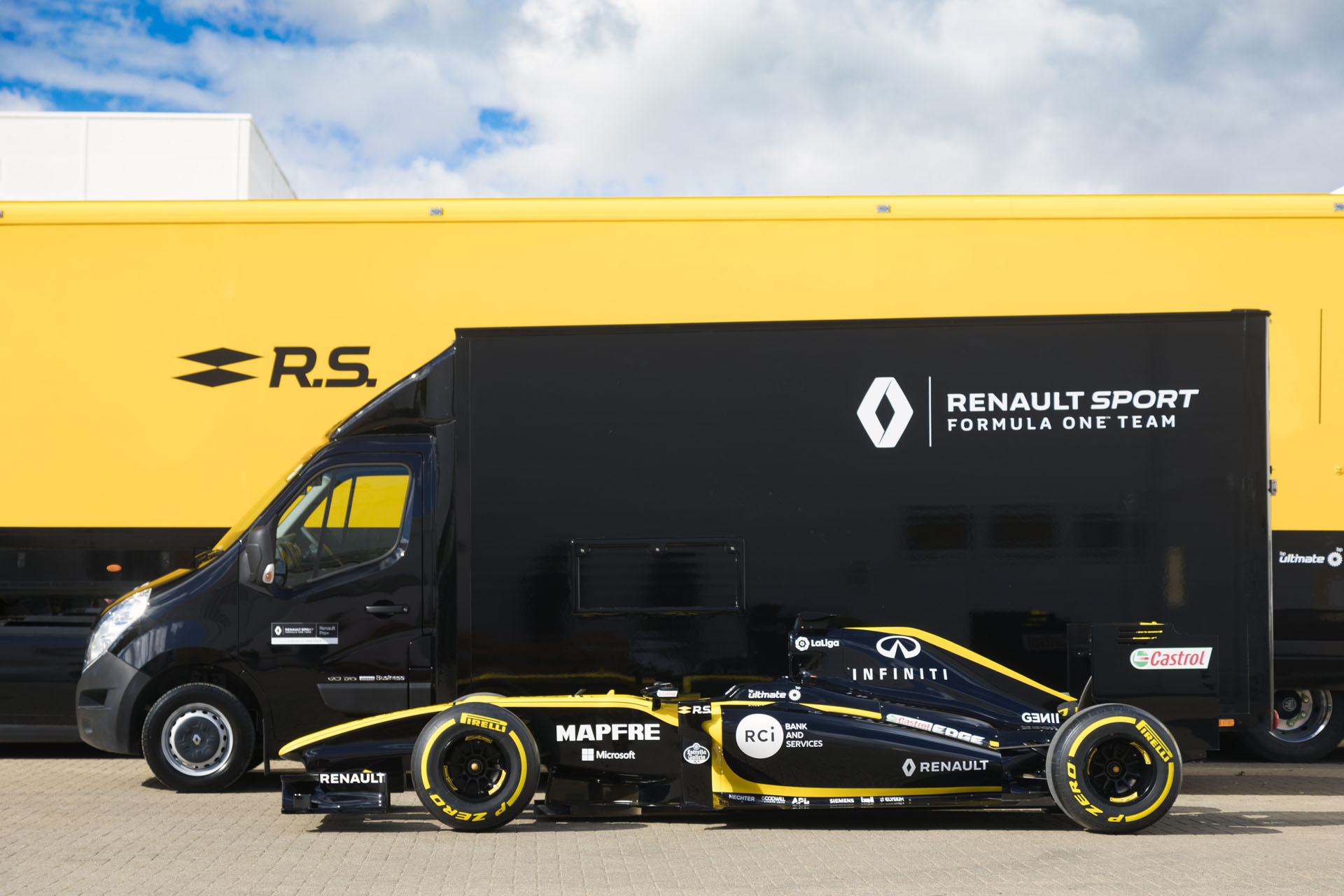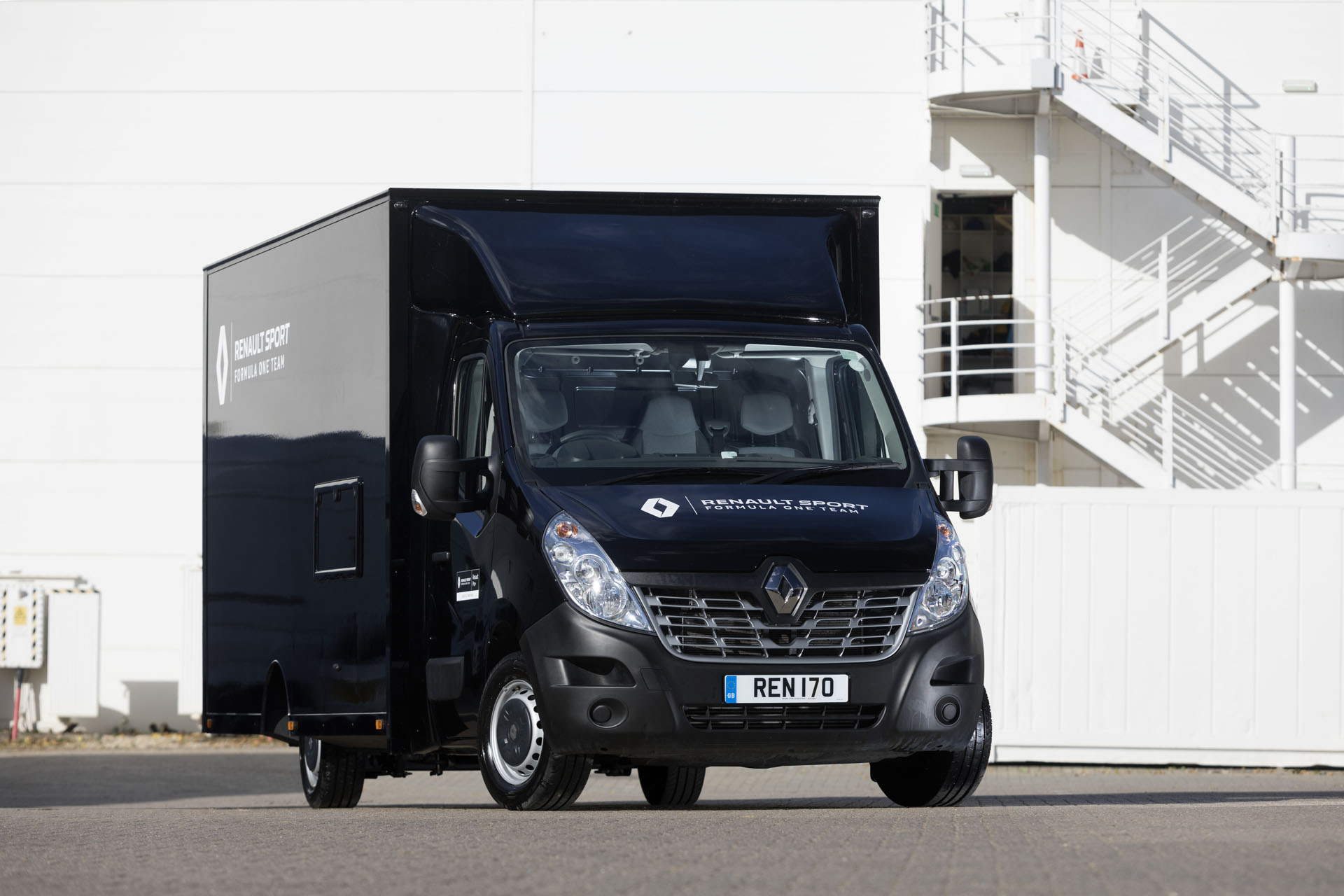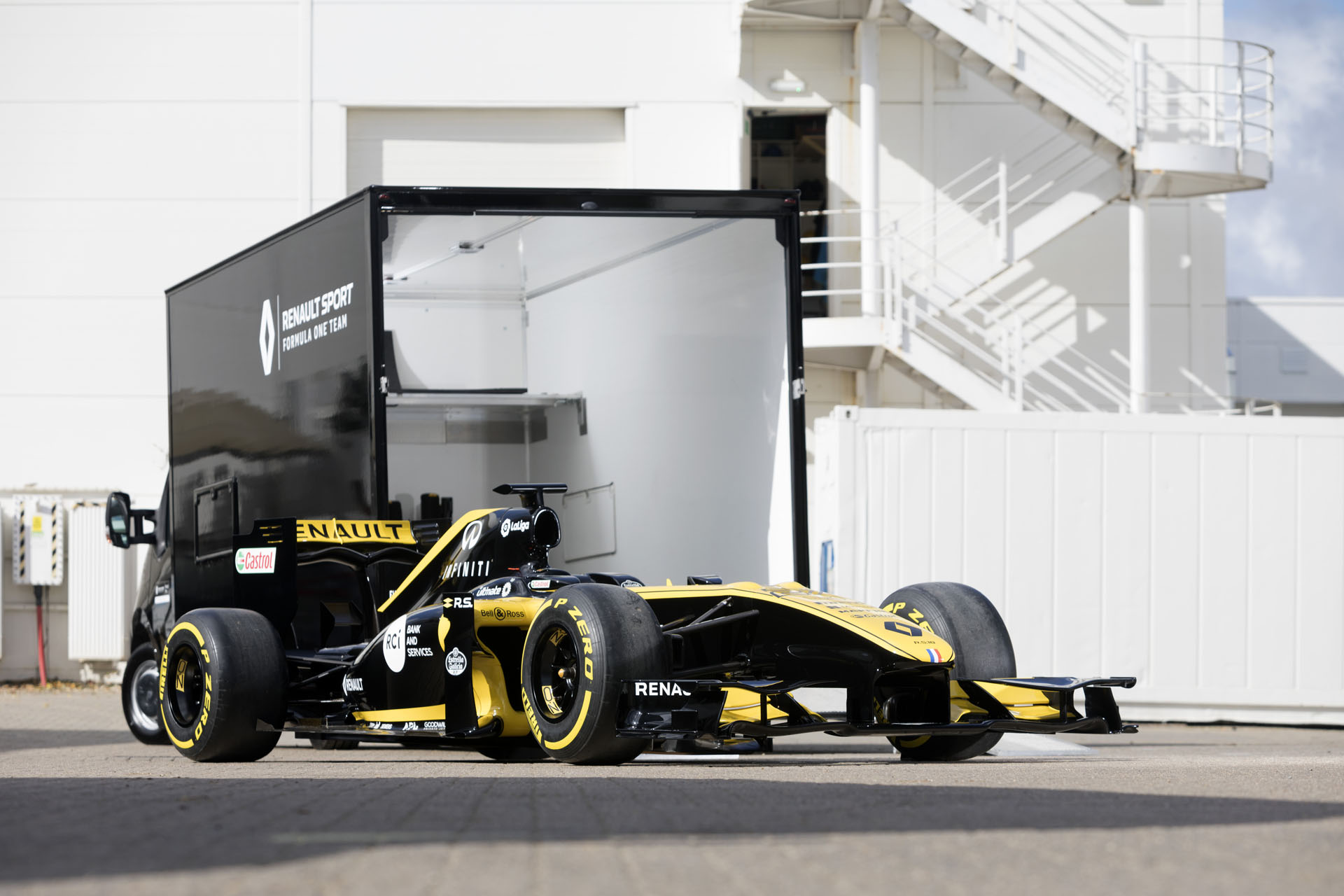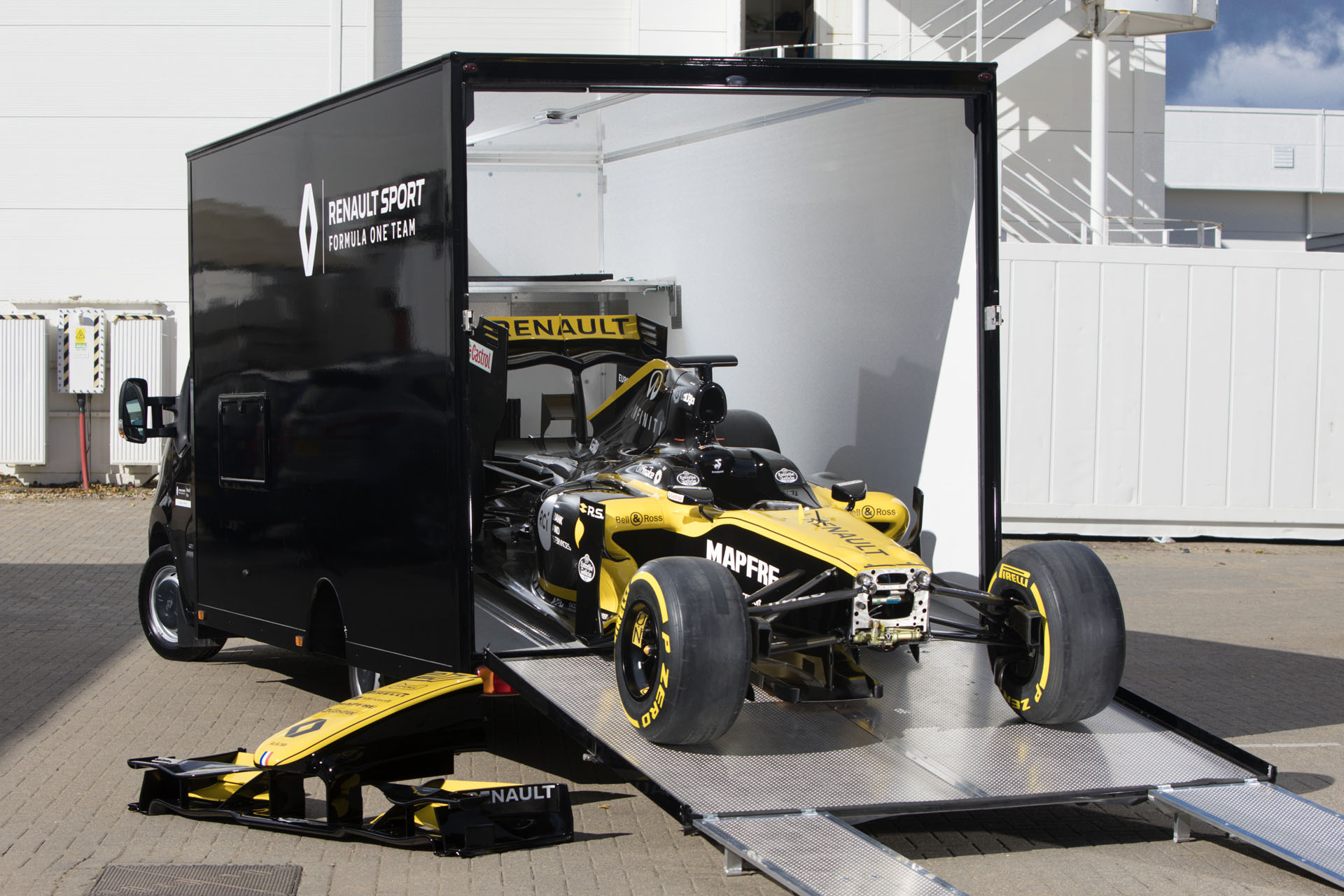The days of driving a race car to the track and back are long gone. These days you need a truck to transport your racer, and Formula One teams typically use rather large ones. But to showcase just how much you could fit in the back of one of its vans, Renault managed to fit an F1 car in there.
This Renault Master was specially built by Advanced KFS through the the Renault Pro+ Accredited Converter program to transport a single F1 car.
The front-drive, three-and-a-half-ton, mid-size platform-cab van – which Nissan also sells as the NV400 and Opel/Vauxhall (despite its new ownership under rival the PSA group) as the Movano – is powered by a 2.3-liter twin-turbo diesel engine rated at 170 horsepower (127 kW). It’s been fitted with a low loading floor and ramps and a 10.6-kN electric winch, along with storage compartments overhead and around where the F1 car is secured (with its nosecone removed to better fit inside).
And it’s not just for show, either. Or rather it is for show, we should say, but the team’s actually using it, though its primary role is not actual races. Instead, it’s tasked with transporting the team’s static display vehicles to locations across Europe at around 200 events each year.
With a usable payload capacity of 844 kg, the van is more than capable of hauling the display car – last year’s RS17 chassis with the engine removed – or even an actual, 700-kg racing car (with engine in place) – and it was recently deployed for rushing to a test session in Valencia.
The real benefit, though, is that it’s much faster and more economical than dispatching one of the team’s 40-ton trucks, a tow vehicle and trailer, or hiring an external company to move the show cars around. All it takes is 15 minutes for a single person to load or unload the car from the specially converted Master van.
“Having the transporter has made a major impact on the efficiency of our show car operation,” said the team’s static show-car supervisor Tim Baston. “The sheer speed in which the Master can be loaded and out on the road also allows us to take advantage of last minute opportunities in terms of transporting our vehicles for additional purposes…. It’s simply made moving our show vehicles a whole lot easier and more cost-effective.”



